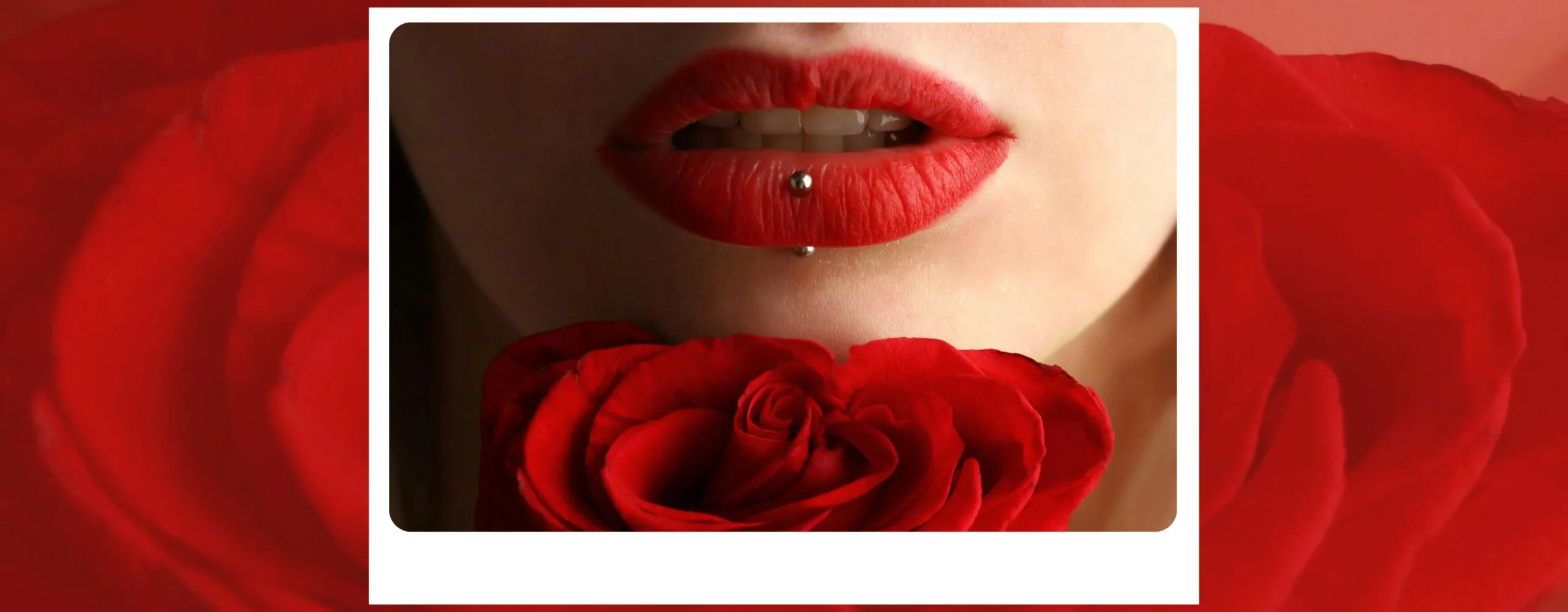
Considering a lip piercing is exciting, but getting one takes it to another level. Lip piercing is a popular form of self-expression that has been trendy for years. Whether you opt for a subtle stud or a classic ring, a lip piercing adds a distinct edge to any style.
However, the popular form of self-expression comes with its challenges. In this blog, we’ll guide you through the challenges before you head to the studio, walk you through the basics of lip piercing, talk about the healing process, and discuss a few mistakes to avoid. So, you have your information handy and know how to deal with the aftermath of lip piercings.
What is Lip Piercing?

As the word goes, lip piercing is piercing metal jewelry through your lips or the surrounding area, such as on the upper lip, lower lip, or side. The best part is that it is aesthetically attractive.
However, with a quick process that can be completed within minutes, the ideal time for the piercing to heal takes months, depending on the type of lip piercing. This makes it crucial to understand the complexities and avoid complications before getting a lip piercing from a professional.
Side-Effects of Lip Piercing
Piercing a tiny fraction of skin welcomes side effects. Here’s what you should prepare for:
1. Infection
Engaging in activities like drinking, eating, and talking exposes our skin and mouth to various bacteria from both external and internal sources. Without proper care, this can lead to complications. Negligence in maintaining oral hygiene or an infection occurring after the procedure can lead to infections, which often cause more discomfort and pain than the aesthetic benefits one might expect.
2. Inflammation
Fuller lips often experience more inflammation due to their increased volume and sensitivity, which makes them more susceptible to external factors like weather, allergies, or irritants. However, it can happen to anyone regardless of lip size. Inflammation can cause noticeable swelling and discomfort, leading to challenges in daily activities such as eating or speaking.
3. Allergic reactions
The lips are among the body’s most sensitive parts, with numerous nerve endings that make them highly responsive to touch and temperature. This sensitivity can make them particularly vulnerable to irritation and discomfort. Often chosen for their aesthetic, metal piercings can occasionally trigger allergic reactions due to the body’s response to certain metals. These reactions can result in redness, swelling, or soreness, causing significant discomfort for some individuals.
Pain and Healing Time
The thought of a needle pricking inside-out through your lips alone can hurt your mind, but how painful can a lip piercing be? Well, the tolerance level to pain varies from individual to individual. Variables like practice, piercing speed, quality of the metal, and expertise in the subject matter all add up to conclude the level of discomfort.
While pain is subjective, healing is objective. The healing time can range between 6 to 10 weeks, depending upon the intensity of the pain, complications, and aftercare. Since the skin on the outside heals first to create a barrier against the bacteria and later starts to heal inwards, following a complete aftercare routine is essential.
Lip Piercing Aftercare
Proper aftercare is essential for a trouble-free healing process. Here are some key steps to follow:
1. Clean the pierced area regularly
Use saline water or an alcohol-free mouthwash solution to clean the piercing thoroughly from the inside out. Rinse your piercing with these solutions after every meal to prevent the leftovers from lying around your mouth.
2. Be mindful of what you eat
Have plenty of liquids that nourish your body, and consume lots of soft foods over hot and spicy food, as you do not want the pierced area to get disturbed and itchy. Avoid hard drinks and smoking, if any, as they can dry up the area around your mouth and slow the healing process.
3. Avoid touching and playing with jewelry
As the pierced area is new, it can become weirdly tempting and attractive. However, repeatedly touching or playing with the pierced part can spread germs and bacteria from the hands to the mouth. It’s always better to wash hands first and minimize playing to prevent infection from spreading.
4. Skip applying makeup
Makeup free from parabens, sulfates, or harmful ingredients still cannot be debated because applying it right after lip piercing is not ideal. The layers can disturb the healing process, causing a delay in returning to normal. The only things that can touch the pierced area shall be saline, alcohol-free solutions.
Common Aftercare Mistakes to Avoid
As mentioned above, regarding the aftercare tips, be mindful of things you should avoid. These include:
1. Overcleaning
While cleaning is essential, overcleaning can hamper healing. It can strip off the natural oils, leading to drying around the pierced area. Ideally, sticking to cleaning the lip piercing as recommended or after meals should be considered.
2. Changing jewelry too soon
Jewelry changes should be made after the pierced area heals to prevent irritation and infection. Ideally, wait at least 2-3 weeks before changing the jewelry. It will allow time for recovery and reduce the risk of complications.
3. Engaging in oral contact too soon
An infection or a ripped-out piercing is worse than mending safety. Thinking about oral contact between 6-8 weeks or when the piercing is healed, whichever is earlier, can be a safe bet. This prevents the other person’s bodily fluids from entering, keeping hygiene intact more than ever.
While lip piercing is exciting and nerve-wracking, it requires a well-informed and cautious approach. Knowing what suits you best, the potential side effects, and what not to do after getting a lip piercing can make healing manageable.
The key to relieving the healing process requires patience. Although it might look like the outward skin is being healed, the inward part of the mouth takes time to be fully healed. Understanding these minor yet significant things can make your lip piercings a successful and memorable experience.




